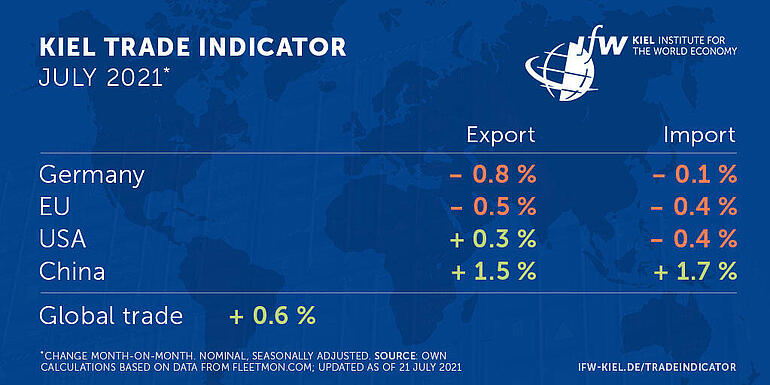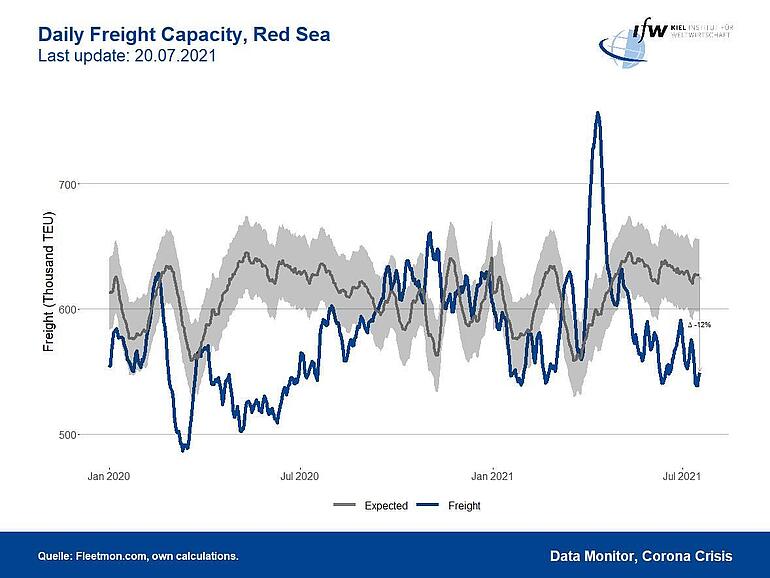News
Kiel Trade Indicator 07/2021: Container ship network out of sync, muted momentum in world trade

For Germany, the Kiel Trade Indicator for July 2021 signals stagnation in both exports (- 0.8%) and imports (- 0.1%) (nominal, seasonally adjusted).
The picture is similar for the EU, with an indicator value for exports of - 0.5 % and - 0.4 % for imports.
"International trade in goods shows a muted dynamic. We continue to observe a noticeable imbalance in international shipping movements. This is likely to be reflected in supply chains and ultimately in rising prices," says Vincent Stamer, Head of Kiel Trade Indicator.
For the US, only moderate movements are expected for both imports and exports and thus also a tendency towards stagnation (exports - 0.3%; imports + 0.4 percent).
For China's trade, the Kiel Trade Indicator shows slightly positive values in both directions signaling an improvement over June and an easing shipping crisis (exports + 1.5 percent; imports + 1.7 percent).
Total world trade in June is expected to be at the level of the previous month (+0.6 percent).
"The global container ship network remains out of sync. Although congestions off major ports in China are easing, we are seeing a buildup of congestions off US ports again. It is striking that the volume of cargo in the Red Sea, an indicator of European-Asian trade, has now been more than ten percent below the volumes actually expected for several weeks. Not since the first Corona wave has there been such a long and significant downward deviation," says Stamer.

For more information on the Kiel Trade Indicator and forecasts for 75 countries, visit www.ifw-kiel.de/tradeindicator.
The next update of the Kiel Trade Indicator will take place on August 4 (without press release) and on August 20 (with press release).
About the Kiel Trade Indicator
The Kiel Trade Indicator estimates trade flows (imports and exports) for 75 countries worldwide, the EU and world trade as a whole. It is based on the evaluation of ship movement data in real time. An algorithm programmed at the Kiel Institute uses artificial intelligence to analyze the data and translates the ship movements into nominal, seasonally adjusted growth figures compared with the previous month.
We update the data twice a month. Around the 20th (with press release) for the current and the following month and around the 3rd (without press release) for the previous and the current month.
Arriving and departing ships are recorded for 500 ports worldwide. In addition, ship movements in 100 maritime regions are analyzed and the effective utilization of container ships is derived from draught information. Country-port correlations can be used to generate forecasts, even for countries without their own deep-sea ports.
Compared to previous leading trade indicators, the Kiel Trade Indicator is available much earlier, is much more comprehensive, relies on a uniquely large database using big data, and has a low statistical error by comparison. The algorithm of the Kiel Trade Indicator uses machine learning, so that the quality of the forecast continues to improve over time.